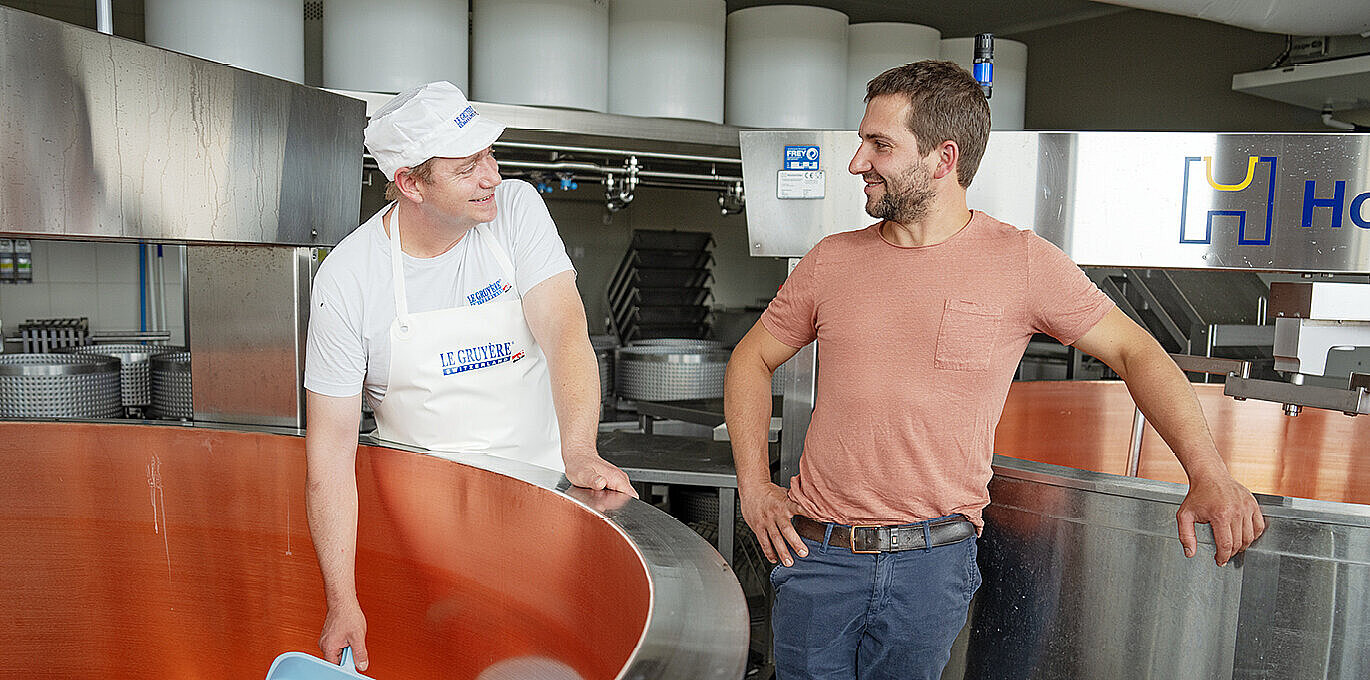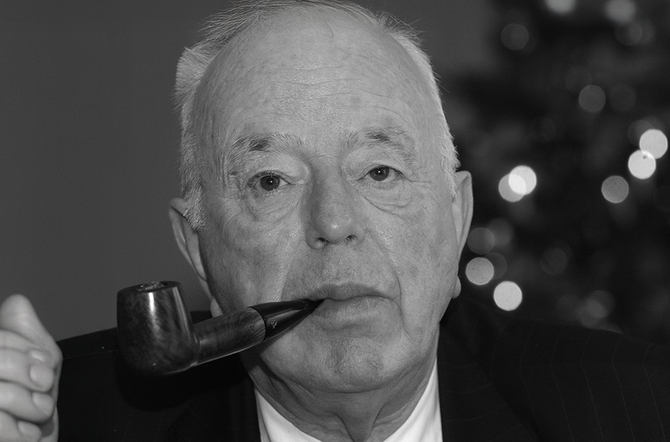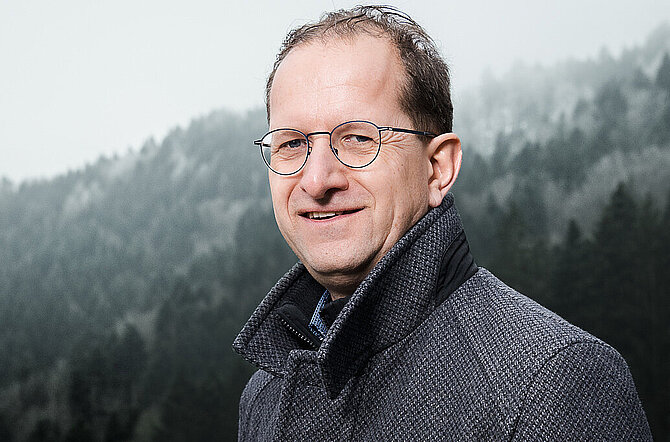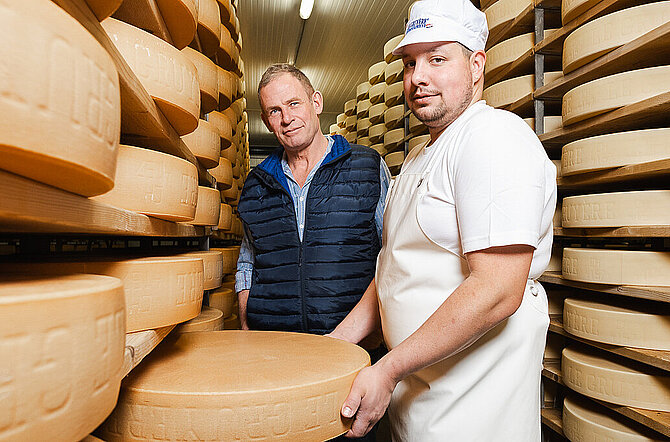A shiny new cheese dairy in the Broye region of Vaud
On August 25 and 26, the Haut-Tierdoz Dairy Company inaugurated its new cheese dairy. The dairy moved from Brenles to its brand new premises in Sarzens on 1 June 2022. The newly built cellar welcomed its first cheeses a month earlier.

"We're satisfied, the situation is healthy."
Nicolas Pichonnat, President of the Dairy Company of Haut-Tierdoz
The Brenles cheese dairy no longer met legal standards. "We would have had to do a lot of work on the floors and ceilings, update the installations and adapt the air conditioning," says Olivier Habegger, the cheesemaker. "What's more, it was on several levels and we couldn't robotise the two cellars made of molasse or the two made of brick, because there wasn't enough height and width."
The decision on whether to build a new building or renovate the existing one took several years. "We quickly realised that it would cost more money to renovate than to design a new building," says Nicolas Pichonnat, President of the Dairy Company.
In Brenles, the cheese dairy was in the middle of the village. There were close neighbours, and everything was cramped. It wasn't easy to come and pour in the morning and evening. "The pouring was done half way out in the road," says Mr Pichonnat. “With the new building, we wanted to have more space, both inside and out."
The roof of the cheese dairy is covered with solar panels on both sides. "We're lucky here," says Olivier Habegger, "there's plenty of light and, from May to the end of September, we get a lot of sun. In fact, on one of the slopes, the sun's rays hit the panels in the morning and again in the evening." It's still too early to draw up a balance sheet and find out how much electricity has been saved. But the cheesemaker and the dairy company are already satisfied.
The construction took a year and a half. The foundation stone was laid in February 2021, and the producers came to pour for the first time on 1 June 2022. Nicolas Pichonnat explains: "We were lucky enough to be just in time before prices soared. As we had already responded to invitations to bid, prices were frozen.”
Financing for the new cheese dairy came from various sources, including the sale of the building at Chesalles sur Moudon and the sale of the old cheese dairy at Brenles. It also received a non-refundable grant from the Société vaudoise des améliorations foncières (Building Improvement Association). Additionally, it obtained interest-free agricultural loans, as well as an interest-free loan from COREB, the Communauté régionale de la Broye, which promotes businesses in the region. It took out a mortgage on the remaining loan. Today, the balance sheet is positive: "We're satisfied, the situation is healthy," says Mr Pichonnat. "The producers know that they won't have to drop any pennies on the price of milk. That was important!"
For the construction itself, the Dairy Company made its choices in close collaboration with the cheesemaker and the architect. "We gave preference to well-known, reliable companies with experience in the cheese dairy sector," says Mr Habegger. "We were keen to work with regional firms or at least Swiss firms when we couldn't find what we wanted locally. As we were supported by the COREB, we also wanted the craftsmen of the Broye region to benefit."
Making and maturing Le Gruyère AOP took some getting used to. It wasn't easy, because there were cheese wheels in the cellars at Brenles and others at Sarzens. With all these changes, the cellars were running out of ammonia, so the maturing process was slowed down. Three weeks after the move, the last cheeses from Brenles arrived in the new cellar. The robot was installed in the new cellar and we were able to start using its potential. "We were then able to fine-tune the air conditioning. It took us some time to achieve the desired result," says Olivier Habegger.
"We also had to adapt to the computer system for manufacturing. This was no easy task. Before, it was all done by hand, with visual checks," recalls the cheesemaker. "When we pressed the switch, the pump stopped. Now, the various start-ups are done on a touch screen, which is a lot more complex. We have pumps in the basement and you can't necessarily see what's happening when you press the screen. You can't master information technology with a snap of your fingers. We have to change our habits. Today, we have a good basis on which to work. The quality of the cheeses is good. I'm counting on another year to work out the details."
These new tools do not replace the expertise of the cheesemaker, who must remain constantly alert and keep in touch with his vat to check the curds by hand.






